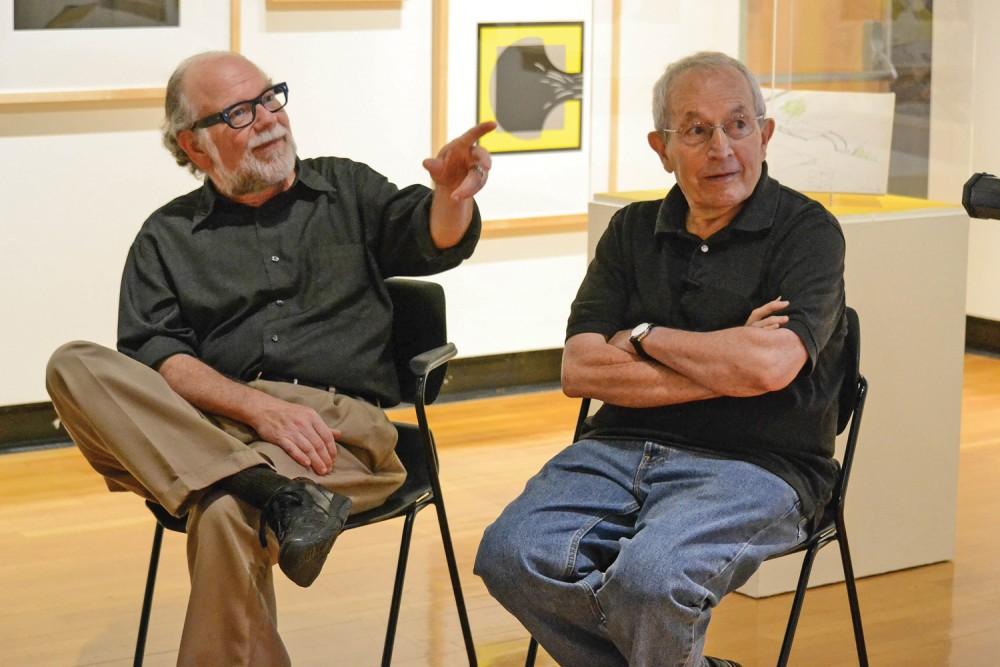The Journey of Art

GVL / Hannah Mico Dutch artist Cyril Lixeberg visited campus on Tuesday morning to speak to one of Doctor David Keister’s print-making classes about his work. Pictured here are Keister (left) and Lixenberg (right).
Sep 11, 2013
The 2013 Fall Arts Celebration at Grand Valley State University started Sept. 11 at the Performing
Arts Center with the opening reception for its debut exhibition “Cyril Lixenberg: An Artist’s
Journey,” which featured Lixenberg’s work from the 1950s to the present.
Since 2002, Lixenberg, an 81-year-old contemporary Dutch artist, has donated more than 500 of
his pieces to GVSU. The university is now home to the largest collection of the artist’s work,
including screen prints, the sculpture “Magela-S” at the Pew Campus and the yellow sculpture,
“Amaranth,” in front of Mackinac Hall.
“The ‘Amaranth’ is a contrast of smooth and rough lines making it one element,” Lixenberg said.
“The location played a role in the design because there is limited space. I made it to be walked both
through and around. The amaranth is a flower I read about. The sculpture is a flower that never
dies.”
Lixenberg’s donations make up part of the assortment of 12,000 art pieces owned by GVSU. Henry
Matthews, the director of galleries and collections at GVSU, is in charge of managing this collection
and connecting the university and students to other artists and programs.
“We have about 150 buildings and each one is filled with art,” Matthews said. “That makes us a little
different from other universities.”
Lixenberg met with art professor David Keister’s Beginning Printmaking class along with several
other students on Sept. 10 to discuss his techniques and processes for silk-screen production and
printmaking.
“You’ll find your own inspiration, but it’s okay if you start by drawing from others,” Lixenberg said.
“I personally like movement, the basis of geometry. I like to manipulate it. I didn’t discover
geometry myself. I believe Pythagoras had something to do with that, but I take circles, triangles
and squares and bend them. That’s what I call manipulating.”
Several of Lixenberg’s ideas for early paintings grew from his Jewish heritage and growing up in the
aftermath of World War II.
“Art is not made in a vacuum,” Keister said. “Our society and culture influence us all the time.
Contemporary art addresses all issues, whether it’s social, economic or political. It’s interesting:
themes keep repeating themselves. Cyril did a painting in 1968 that depicts the Vietnam War and
where are we today? Not too far away from that road. The great thing about art is you never have to
retire from it. Bop till you drop.”
Lixenberg’s work is also currently on display at the Muskegon Museum of Art, the Saugatuck Center
for the Arts, Calvin College’s Center Art Gallery and the Grand Rapids Art Museum. The exhibition
began Aug. 23 and will continue until Nov. 1.
“Some of these pieces I haven’t seen in 40 years,” Lixenberg said. “It’s a wonderful feeling, really.
Wow.”























